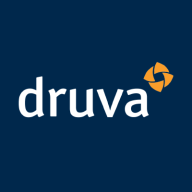

Find out in this report how the two Cloud Backup solutions compare in terms of features, pricing, service and support, easy of deployment, and ROI.
| Product | Market Share (%) |
|---|---|
| AWS Elastic Disaster Recovery | 1.2% |
| Druva Data Security Cloud | 0.2% |
| Other | 98.6% |

| Company Size | Count |
|---|---|
| Small Business | 5 |
| Midsize Enterprise | 4 |
| Large Enterprise | 7 |
CloudEndure Disaster Recovery enables real-time replication and rapid recovery to enhance organizational resilience. Key features include block-level data replication, ease of use, cost-effectiveness, and automated recovery orchestration. Users benefit from increased efficiency, improved workflows, and enhanced data management, significantly improving organizational performance and business continuity.
Druva Data Security Cloud is a cloud-based platform offering comprehensive data security and management for businesses. It provides features focused on data backup, recovery, archiving, and governance across cloud workloads (like Microsoft 365, Google Workspace, and Salesforce), endpoints (such as laptops and mobile devices), and virtual machines (VMs). Key functionalities include centralized management via a web-based console, automated backups and quick recovery, data archiving for compliance, threat protection with malware and ransomware detection, and data loss prevention (DLP). The platform is scalable and flexible, allowing customization to meet specific data volume and security needs.
We monitor all Cloud Backup reviews to prevent fraudulent reviews and keep review quality high. We do not post reviews by company employees or direct competitors. We validate each review for authenticity via cross-reference with LinkedIn, and personal follow-up with the reviewer when necessary.